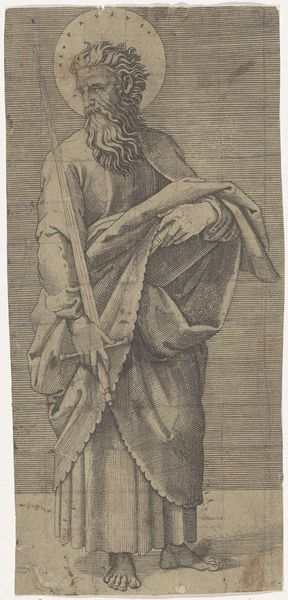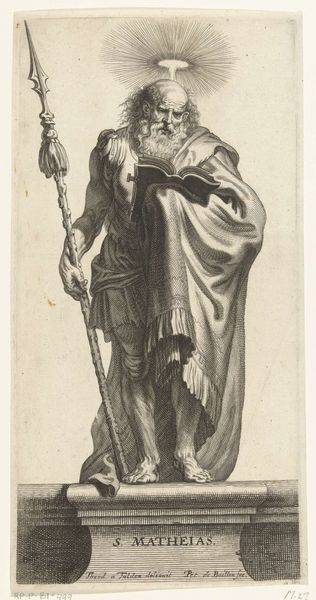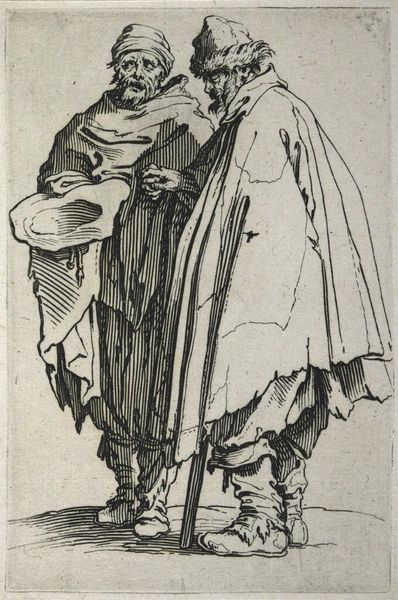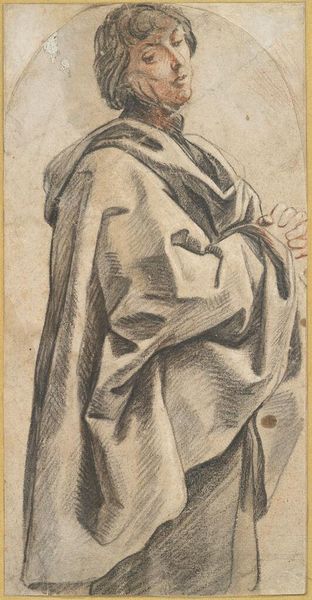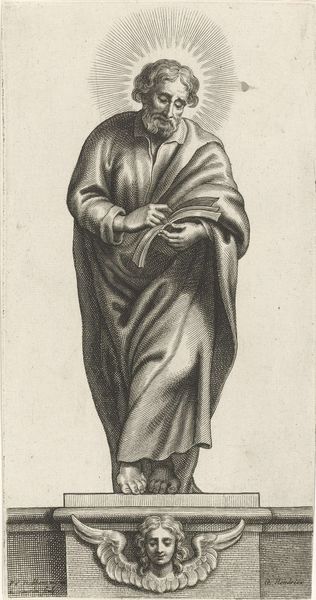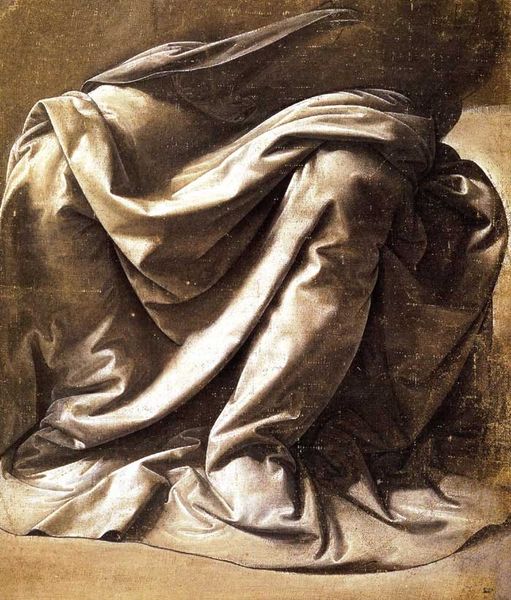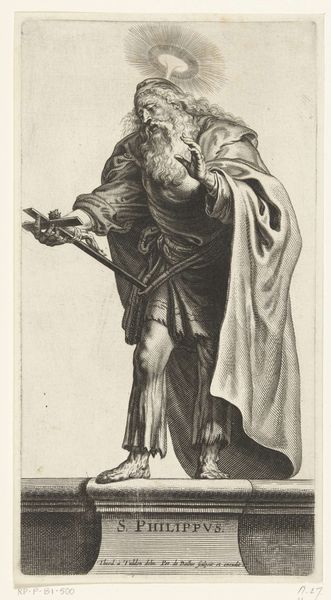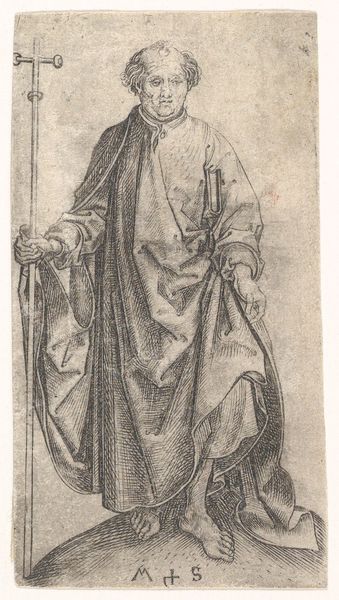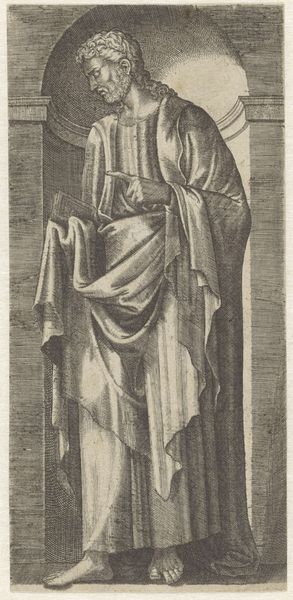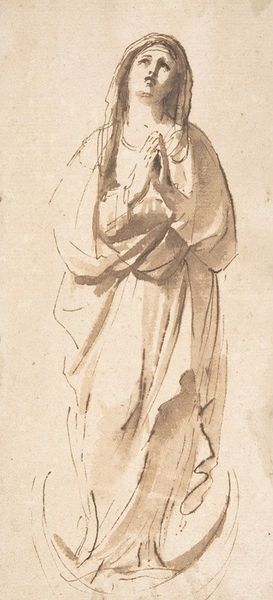
drawing, charcoal
#
portrait
#
drawing
#
charcoal drawing
#
figuration
#
charcoal
#
history-painting
#
northern-renaissance
#
charcoal
Dimensions: 235 x 165 cm
Copyright: Public domain
Editor: Here we have Matthias Grünewald's charcoal drawing, "Complaining Pharisee" from 1511. The figure's raised hand and pleading gaze give a dramatic feel to the work. What can you tell me about this historical piece? Curator: It's a powerful character study indeed. Grünewald was operating in a tumultuous time. Religious and political reformations were underway, directly impacting artistic expression and its patronage. Drawings like these served a function. Consider: who were the intended viewers and how would such a striking depiction of religious authority influence the cultural discourse surrounding the Church at that time? Editor: So you’re saying that it might be a form of social commentary? Was Grünewald trying to provoke conversation, or perhaps challenge authority with this particular characterization? Curator: Absolutely. Look at the figure's expression—exaggerated, perhaps even grotesque. This wasn’t simply about rendering a likeness; it’s a statement. Think about the role of art in the early 16th century. How did printed images and drawings shape public opinion and religious understanding, and in what ways could such imagery serve as a form of protest, or reinforcement of political and religious ideologies? Editor: That's a great point; I hadn't thought about the broader cultural impact in that way. The distribution of images really could shape belief. Curator: Precisely. Considering the era and Grünewald's specific context allows us to appreciate "Complaining Pharisee" not just as an aesthetic achievement, but as a visual participant in a historical debate. Editor: This discussion gave me a much deeper understanding of the social power that art held. Thank you. Curator: My pleasure. I now feel like I can view this drawing in a completely new light.
Comments
No comments
Be the first to comment and join the conversation on the ultimate creative platform.
